Related Research Articles
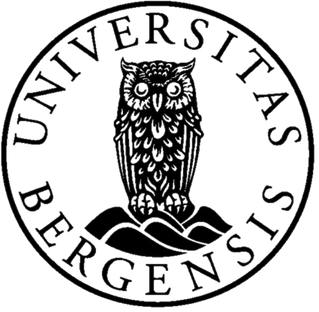
The University of Bergen is a research-intensive state university located in Bergen, Norway. As of 2021, the university has over 4,000 employees and 19,000 students. It was established by an act of parliament in 1946 based on several older scientific institutions dating back to 1825, and is Norway's second oldest university. It is considered one of Norway's four "established universities" and has faculties and programmes in all the fields of a classical university including fields that are traditionally reserved by law for established universities, including medicine and law. It is also one of Norway's leading universities in many natural sciences, including marine research and climate research. It is consistently ranked in the top one percentage among the world's universities, usually among the best 200 universities and among the best 10 or 50 universities worldwide in some fields such as earth and marine sciences. It is part of the Coimbra Group and of the U5 group of Norway's oldest and highest ranked universities.
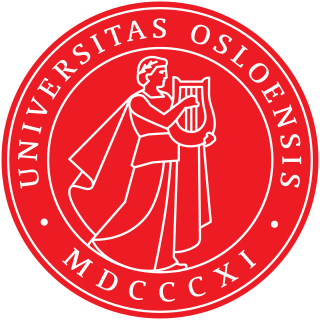
The University of Oslo is a public research university located in Oslo, Norway. It is the highest ranked and oldest university in Norway. It is consistently ranked among the top universities in the world and as one of the leading universities of Northern Europe; the 2022 Academic Ranking of World Universities ranked it the 67th best university in the world and the third best in the Nordic countries. In 2023, both the QS World University Rankings and the Times Higher Education World University Rankings listed the university as the highest ranked Norwegian university, placing it 101st and 126th in the world respectively.

Norwegian Computing Center is a private, independent, non-profit research foundation. NR carries out contract research and development in the areas of computing and quantitative methods for a broad range of industrial, commercial and public service organizations in Norway and internationally. NR is one of Europe's largest research environments in applied statistics and its projects cover a large variety of applied and academic problems. NR's offices are located near the university campus Blindern in Oslo, and adjacent to Oslo Science Park (Forskningsparken).

The Norwegian University of Science and Technology is a public university in Norway and the largest in terms of enrollment. The university's headquarters campus is located in Trondheim, with regional campuses in Gjøvik and Ålesund.

The Norwegian Institute of Technology was a science institute in Trondheim, Norway. It was established in 1910, and existed as an independent technical university for 58 years, after which it was merged into the University of Trondheim as an independent college.

The Norwegian University of Life Sciences is a public university located in Ås, Norway. It is located at Ås in Viken, near Oslo, and at Adamstuen in Oslo and has around 5,200 students.
SINTEF, headquartered in Trondheim, Norway, is an independent research organization founded in 1950 that conducts contract research and development projects. SINTEF has 2000 employees from 75 countries and annual revenues of three billion Norwegian kroner. SINTEF has a close partnership with Norwegian University of Science and Technology (NTNU), started in 1950 when SINTEF was founded. SINTEF has expertise in technology, medicine and the social sciences. Alexandra Bech Gjørv is the CEO of SINTEF, preceded by Unni Steinsmo, Morten Loktu and Roar Arntzen.
In 2017 the department was merged with the Department of Geology and Mineral Resources Engineering, forming the new Department of Geoscience and Petroleum.

Higher education in Norway is offered by a range of ten universities, nine specialised universities, 24 university colleges as well as a range of private university colleges. The national higher education system is in accordance with the Bologna process, with bachelor's degrees, master's degrees and doctoral degrees. Acceptance is offered after finishing upper secondary school and meeting general university admissions certification.
The University Graduate Center (UNIK) is a research foundation at Kjeller in Norway. UNIK has four focus areas
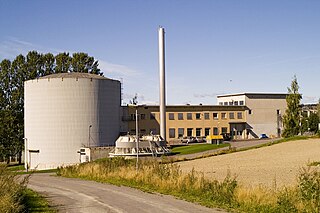
Institute for Energy Technology (IFE) was established in 1948 as the Institute for Nuclear Energy (IFA). The name was changed in 1980. Its main office is at Kjeller, Norway, and slightly under half of the institute’s activities are based in Halden. In Halden IFE is host to the international OECD Halden Reactor Project, with 18 member states.

Arne Sølvberg is a Norwegian computer scientist, professor in computer science at the Norwegian University of Science and Technology (NTNU) in Trondheim, Norway, and an expert in the field of information modelling.
Johannes Falnes is a Professor Emeritus of Experimental Physics at the Department of Physics of the Norwegian University of Science and Technology noted for his contributions to wave energy research. He is one of the pioneers of modern wave energy research.
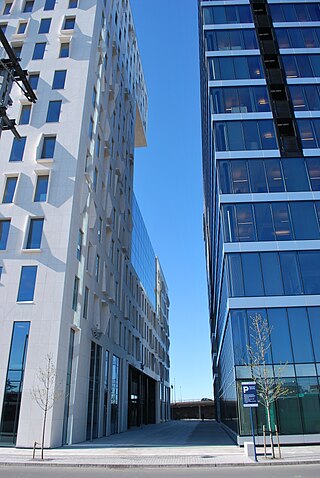
The economy of Greater Oslo plays an important part in Norway's national economy.
forskning.no is an Oslo-based online newspaper established by the Research Council of Norway in 2002. It publishes news about science and research from Norway and abroad. The web site is run by Foreningen for drift av forskning.no, a non-profit organization which has 78 research institutions as members. forskning.no has its own writers and journalists and freelance writers. In addition articles are submitted by the research institutes and then edited by forskning.no staff before being published. Its English-language version is known as sciencenorway.no.

Olav Bolland is a Norwegian researcher and Professor in Energy and Process Engineering. His specialization is in thermal power generation, carbon capture and storage, particle technology and drying. He has been Dean at the Faculty of Engineering at the Norwegian University of Science and Technology – NTNU since August 2017.

The University of South-Eastern Norway, commonly known as USN, is a Norwegian state university. It has campuses in Bø in Telemark, Porsgrunn, Notodden, Rauland, Drammen, Hønefoss, Kongsberg and Horten. USN is a continuation of the three former university colleges, Telemark University College, Buskerud University College and Vestfold University College, which merged between 2014 and 2016 to form the University College of South-Eastern Norway. The institution was granted the status of a full university by the King-in-Council on 4 May 2018. It has 1,360 employees and 17,152 students.
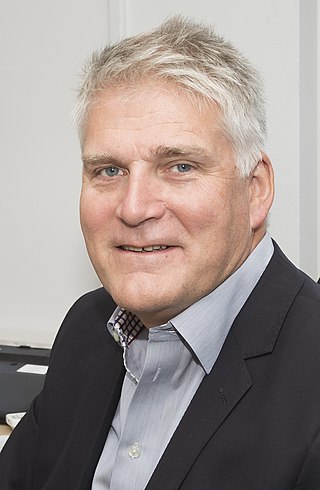
Nils Anders Røkke is a Norwegian scientist and business leader. He is the Executive Vice President Sustainability SINTEF. He is as of May 2017 the Chairman of The European Energy Research Alliance. EERA is the public research pillar of the EU Strategic Energy Technology Plan(SET-Plan). The SET-Plan aims at accelerating the development and market uptake of key low carbon technologies. EERA brings together more than 170 research centres and universities, working together on 17 joint research programmes, they build on national research initiatives.
Olav Bjarte Fosso is a Norwegian engineer and full professor of power engineering at the Norwegian University of Science and Technology (NTNU). He is known for his research on hydro scheduling, offshore/onshore grid and market integration of intermittent generations, and smart energy systems. He was elected President of the Norwegian Climate Foundation in 2015.
References
- 1 2 SFFE homepage
- ↑ Annual report 2010, Centre for Renewable Energy
- ↑ Technology as a driving force in climate policy ( Bjørn-Erik Haugan, Cicerone, Number: 6. pp.8-9. 2005)